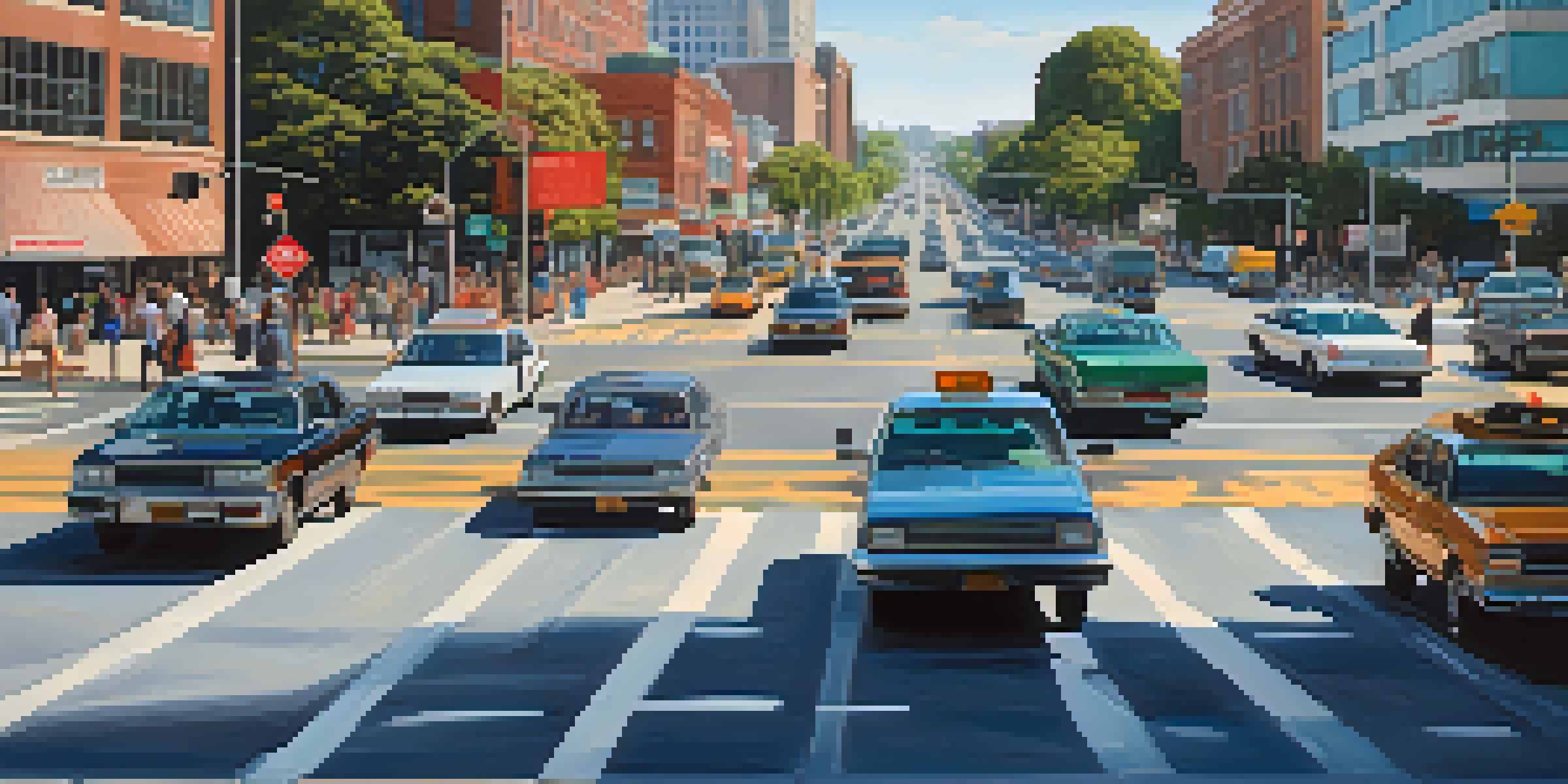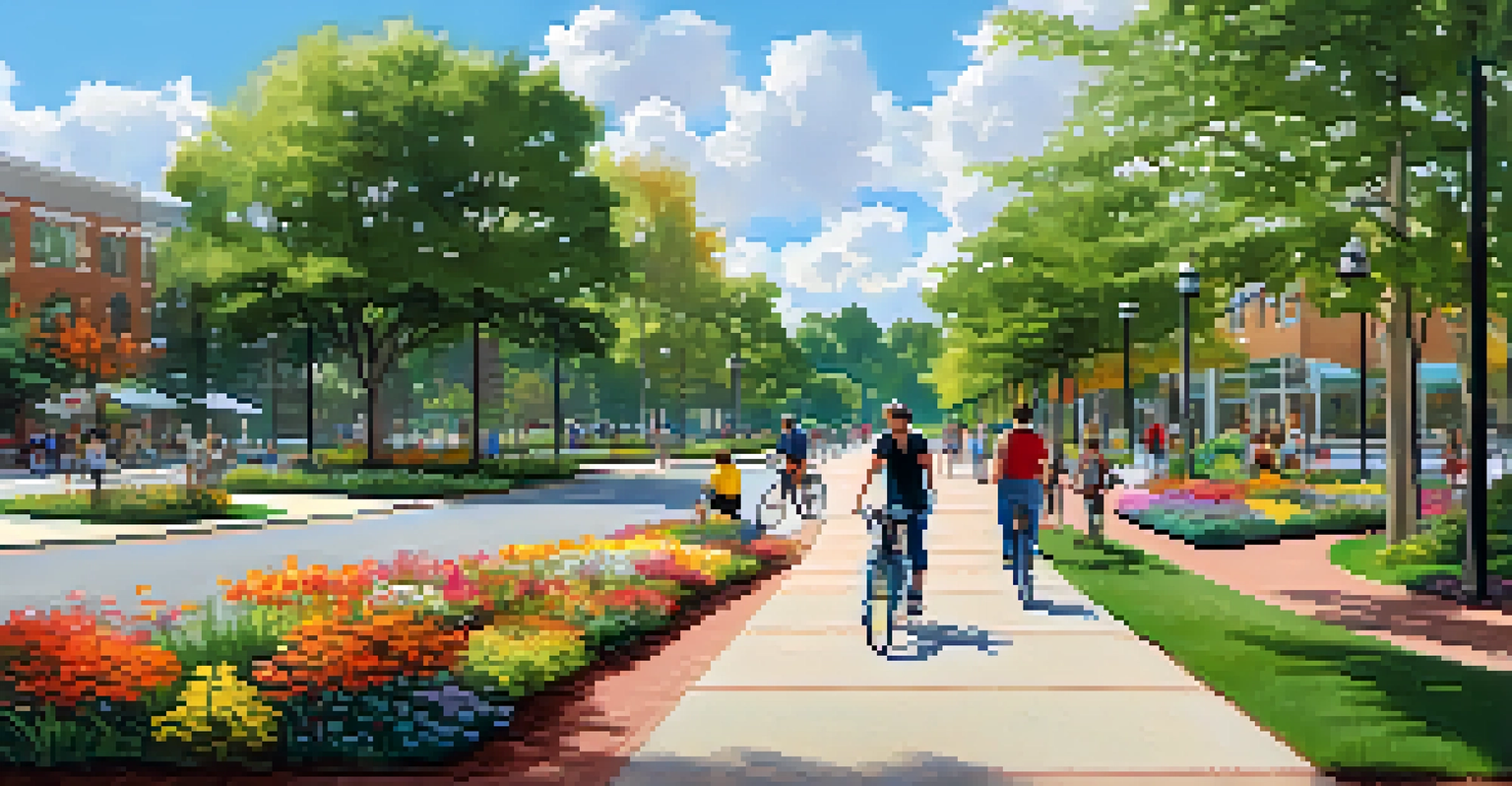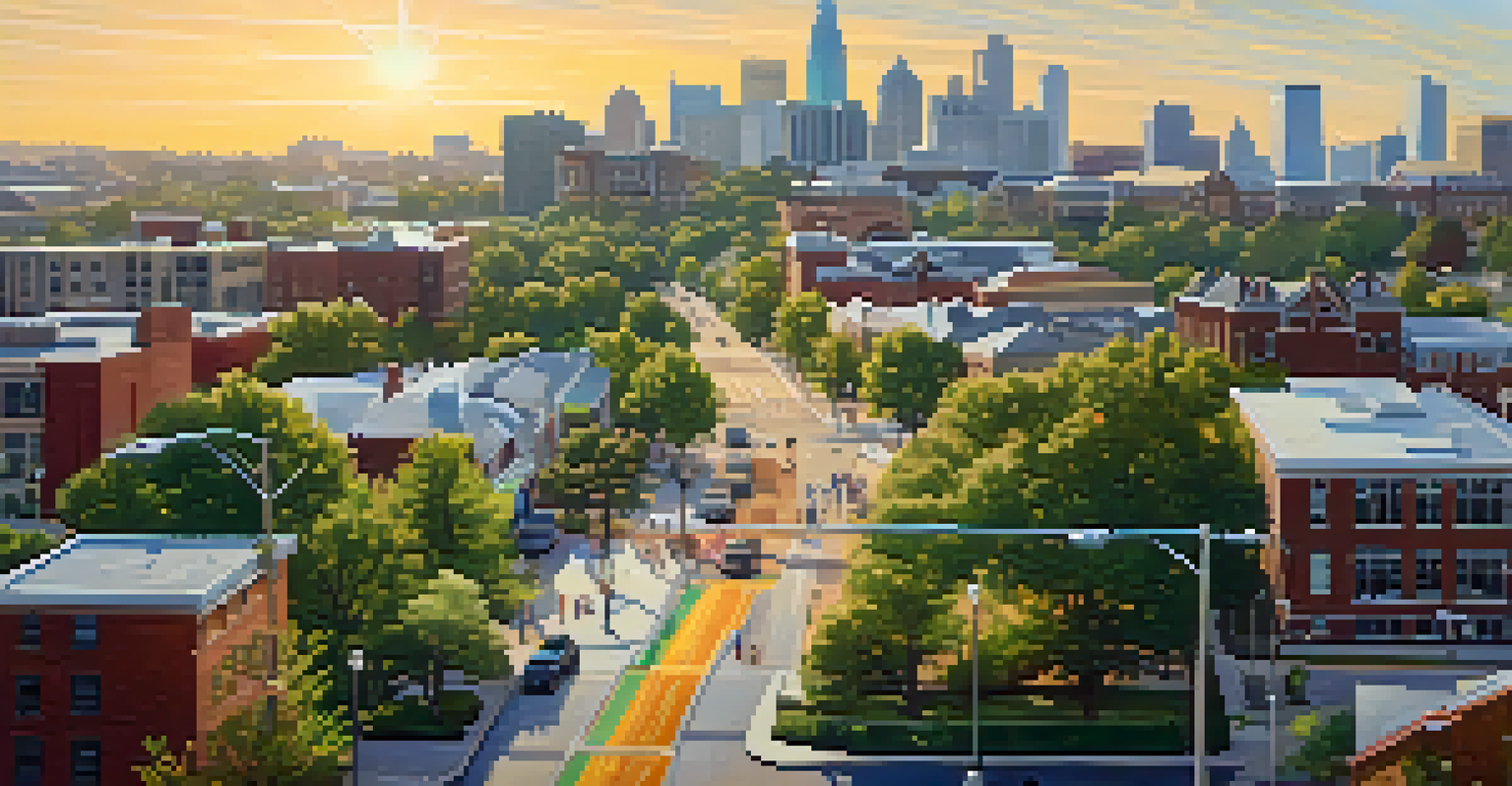Raleigh's Traffic Management: Strategies for Improvement

Understanding Raleigh's Current Traffic Challenges
Raleigh, like many growing cities, faces significant traffic challenges as its population continues to rise. With more cars on the road, congestion has become a daily headache for commuters, affecting everything from work schedules to air quality. Understanding these challenges is the first step toward effective traffic management solutions.
The best way to predict the future is to create it.
One of the key issues is the outdated infrastructure that struggles to keep pace with the rapid growth of the city. Many roads are simply not equipped to handle the volume of traffic, leading to bottlenecks and delays. This situation is compounded by the fact that public transportation options are limited, encouraging more people to rely on personal vehicles.
Moreover, the increase in road construction and maintenance activities can further exacerbate traffic woes. While necessary for long-term improvements, these projects can create temporary gridlocks that frustrate drivers. By analyzing these current challenges, we can begin to explore potential strategies for improvement.
Smart Traffic Signals: A Modern Solution
One promising strategy for alleviating traffic congestion in Raleigh is the implementation of smart traffic signals. These advanced systems use real-time data to optimize traffic flow, adjusting signal timings based on current conditions. Imagine a traffic light that knows when to change based on the number of cars waiting—it’s a game changer!

Smart traffic signals can significantly reduce wait times and improve overall traffic efficiency. For example, if a major intersection is experiencing heavy traffic, the system can extend the green light for the main road while minimizing delays for side streets. This not only eases congestion but also enhances safety for all road users.
Smart Solutions for Traffic Congestion
Implementing smart traffic signals can optimize traffic flow and reduce wait times, significantly easing congestion in Raleigh.
Moreover, these systems can be integrated with public transit schedules, helping buses to avoid delays and stick to their timetables. In turn, this encourages more people to utilize public transportation, further reducing the number of vehicles on the road. The future of traffic management in Raleigh could very well hinge on this technological advancement.
Enhancing Public Transportation Options
Expanding and improving public transportation is another crucial strategy for tackling traffic issues in Raleigh. By providing more reliable, frequent, and convenient transit options, the city can encourage residents to leave their cars at home. This shift not only eases congestion but also contributes to a more sustainable urban environment.
Sustainability is about ecology, economy, and equity.
For instance, increasing the number of bus routes and introducing express services can make public transit a more appealing choice for commuters. Additionally, enhancing the comfort and safety of transit options can help alleviate concerns that might deter potential riders. Imagine a seamless journey from your front door to your office without the stress of navigating traffic—sounds ideal, right?
Furthermore, integrating technology into public transit systems can improve user experience. Real-time tracking apps can help passengers plan their trips better, reducing wait times and making public transport a more attractive alternative. By investing in public transportation, Raleigh can pave the way for a more efficient traffic management system.
Promoting Active Transportation: Walking and Biking
Encouraging active transportation, such as walking and biking, is another effective strategy for improving Raleigh's traffic situation. By creating more pedestrian-friendly environments and dedicated bike lanes, the city can make these alternatives safer and more appealing. Imagine a neighborhood where it's just as easy to bike to work as it is to drive—this is within reach!
Investments in infrastructure like bike-sharing programs and expanded sidewalks can promote a culture of active transportation. Not only does this reduce the number of cars on the road, but it also contributes to healthier lifestyles for residents. Walking or biking can be a fantastic way to incorporate exercise into daily routines, all while helping the environment.
Boosting Public Transportation Appeal
Expanding and improving public transit options can encourage residents to choose alternatives to driving, alleviating traffic issues.
Moreover, community engagement is essential in promoting active transportation. Organizing events like ‘Bike to Work Days’ can raise awareness and encourage residents to try these modes of transport. By fostering a community that values walking and biking, Raleigh can significantly improve its traffic situation while enhancing quality of life.
Implementing Congestion Pricing: A Bold Move
One innovative approach that some cities are exploring is congestion pricing, and it could be a valuable strategy for Raleigh. This system involves charging drivers a fee to enter high-traffic areas during peak hours, encouraging them to consider alternate routes or modes of transport. While it may sound controversial, it has shown success in other urban areas.
The revenue generated from congestion pricing can be reinvested into improving public transportation and infrastructure. This creates a win-win situation: reducing congestion while funding essential services. It’s like a toll for the privilege of driving in busy areas, which can help manage demand and keep traffic flowing.
However, implementing congestion pricing requires careful planning and public buy-in. Education campaigns can help residents understand the benefits and rationale behind it, fostering acceptance. If done right, this strategy could be a significant step towards a more sustainable traffic management solution in Raleigh.
Utilizing Data Analytics for Traffic Management
Data analytics is revolutionizing how cities approach traffic management, and Raleigh can benefit immensely from this trend. By leveraging data collected from various sources—like traffic cameras, sensors, and GPS tracking—city planners can gain valuable insights into traffic patterns. Imagine using data to predict congestion before it happens; it’s not just a dream anymore.
With this information, authorities can implement proactive measures to alleviate traffic issues. For instance, if data shows that certain intersections are consistently congested during specific times, adjustments can be made to traffic signal timings or even road layouts. This data-driven approach ensures that solutions are tailored to the actual needs of the city.
Community Engagement is Key
Involving the community in discussions about traffic solutions fosters innovative ideas and promotes support for necessary changes.
Moreover, public access to this data can empower citizens to make informed travel decisions. Apps that provide real-time traffic updates based on analytics can help commuters plan their routes more effectively. By harnessing the power of data, Raleigh can transform its traffic management into a more responsive and efficient system.
Community Involvement in Traffic Solutions
Community involvement is a vital component in crafting effective traffic management strategies. Engaging residents in discussions about traffic issues can lead to innovative solutions that reflect the community's needs. When people feel their input is valued, they are more likely to support and participate in proposed changes.
Organizing community forums and surveys can help gather diverse perspectives on traffic challenges. For example, residents can provide insights into areas where they feel unsafe or suggest improvements for local transit. This collaborative approach not only fosters a sense of ownership but can also uncover unique solutions that city planners might not have considered.

Furthermore, educating the community about traffic management initiatives can enhance awareness and encourage participation in programs like carpooling or public transit use. By working together, Raleigh can create a more cohesive traffic management strategy that truly serves its residents.
Looking Ahead: A Vision for Raleigh's Traffic Future
As Raleigh continues to grow, it’s essential to maintain a forward-thinking approach to traffic management. By combining innovative strategies, community engagement, and technology, the city can pave the way for a more efficient and sustainable transportation system. This vision isn’t just about solving current problems but also about preparing for future challenges.
Implementing these strategies requires collaboration among city officials, transportation agencies, and residents. It’s a collective effort that requires everyone’s input and commitment to creating a better traffic environment. By working together, Raleigh can create a model for other cities facing similar issues.
Ultimately, the goal is to enhance the quality of life for all Raleigh residents. A well-managed traffic system can reduce stress, improve air quality, and foster a stronger sense of community. With the right strategies in place, Raleigh can look forward to a future where traffic woes are a thing of the past.